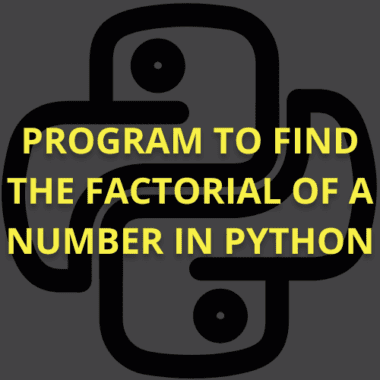Summary: Mojo programming language represents a significant leap forward in AI development. By offering a robust, user-friendly, and future-proof language, Mojo empowers developers to create intelligent applications that can transform our world. As the language continues to evolve and gain traction, we can expect a wave of innovation in AI-driven by the creativity and ingenuity of developers who embrace its power.
Introduction
The world of Artificial Intelligence (AI) is constantly evolving, demanding ever-more powerful and efficient tools for developers. Enter Mojo, a revolutionary new programming language specifically designed to address the challenges of AI development.
Mojo bridges the gap between the ease of use offered by languages like Python and the raw performance of systems languages like C++. This unique combination empowers developers to create complex AI models with unparalleled speed and flexibility.
Mojo: A New Language for AI
Developed by Modular Inc., Mojo is a proprietary language designed explicitly for building AI applications. It boasts a clean and familiar syntax, making it approachable for programmers with experience in languages like Python. However, beneath its user-friendly exterior lies a powerful engine capable of generating highly optimised code, rivalling the performance of languages like C++.
Unveiling the Magic of Mojo
Developed by Modular Inc., Mojo boasts a clean, concise syntax that feels familiar to Python users. This makes it easy for developers to quickly pick up and become productive, even if they lack experience with lower-level languages.
But Mojo’s true strength lies beneath the surface. It leverages MLIR (Multi-Level Intermediate Representation) technology to provide low-level control without sacrificing readability.
MLIR bridges the high-level Mojo code and the underlying hardware, enabling the compiler to generate highly optimised machine code. This translates to significant performance gains compared to traditional AI development languages.
Key Features that Make Mojo a Game-changer
In this section, you will learn about the critical features of Mojo and how it is essential for redefining programming with enhanced speed, safety, and versatility. I have mentioned major critical features of Mojo programming given below:
- Performance on Par with Compiled Languages
Mojo applications can rival the execution speed of languages like C++, making them ideal for computationally intensive AI tasks like deep learning and image recognition.
- Expressive and Readable Syntax
Mojo borrows heavily from Python and offers a clear and concise syntax that promotes code maintainability and collaboration. Developers can focus on the logic of their AI models without getting bogged down in complex language constructs.
- Zero-Cost Abstractions
MLIR allows Mojo to achieve “zero-cost abstractions.” This means high-level code written in Mojo can be translated directly into efficient machine code, eliminating the performance overhead often associated with abstractions in other languages.
- Built-in Auto-Tuning
Mojo incorporates an auto-tuning system that automatically optimises code for the specific hardware it’s running on. This ensures that AI models perform optimally on diverse computing platforms, from CPUs and GPUs to specialised AI accelerators.
- Open-Source and Extensible
Unlike many proprietary AI frameworks, Mojo is open-source, allowing for community contributions and continuous improvement. Additionally, its modular design allows developers to extend the language with custom functionalities tailored to specific AI needs.
Benefits for AI Developers
Now, you will loo at the benefits of Mojo, which is essential for AI developers and how it offers optimised performance, easy integration with existing AI frameworks, and advanced debugging tools. The advantages of using Mojo for AI development are numerous:
- Faster Training and Deployment
Mojo’s performance benefits translate to faster training times for AI models. This allows developers to iterate more quickly and experiment with different approaches. Additionally, compiled Mojo applications can be deployed on various platforms without performance degradation.
- Reduced Development Costs
With its ease of use and focus on efficiency, Mojo can significantly reduce the time and resources needed to develop complex AI models. This translates to lower development costs and faster time to market for AI-powered applications.
- Flexibility for Diverse AI Projects
Mojo’s versatility makes it suitable for a wide range of AI tasks. Whether you’re building deep learning models, natural language processing applications, or computer vision systems, Mojo provides the performance and control needed to bring your ideas to life.
- Future-Proofing AI Development
The open-source nature and modular design of Mojo ensure that the language can keep pace with the rapid advancements in AI hardware and software. Developers can leverage ongoing community contributions and advancements in MLIR to ensure their AI models remain performant over time.
What Language is Mojo Written In?
Unlike some languages built on existing ones, Mojo isn’t a derivative. It utilises a novel approach, leveraging the LLVM (Low-Level Virtual Machine) compiler infrastructure. This allows Mojo to generate efficient machine code directly, bypassing the need for an intermediary language.
Is Mojo Similar to Python?
In terms of syntax, Mojo borrows heavily from Python, making it easy for Python programmers to pick up quickly. The code structure and overall feel are familiar, allowing developers to focus on the AI logic rather than wrestling with complex language constructs.
Mojo’s static typing system further enhances this focus on readability. Unlike Python’s dynamic typing, Mojo requires explicit declaration of variable types, leading to fewer runtime errors and a more maintainable codebase.
What is the Use of Mojo Programming Language?
Mojo’s true power lies in its ability to bridge the gap between ease of development and raw performance. This makes it ideal for various AI applications, including:
- Machine Learning Model Development: Mojo simplifies the process of building and training complex models, allowing developers to focus on the algorithms themselves.
- Deep Learning: The language’s ability to handle large datasets and perform efficient numerical computations makes it well-suited for deep learning projects.
- High-Performance AI Systems: Mojo shines in resource-constrained environments where maximising performance is crucial.
Is Mojo Better Than Python?
This depends on your specific needs. Python remains a popular choice for AI development due to its extensive libraries and vast community. However, Mojo offers distinct advantages:
- Superior Performance: For computationally intensive tasks, Mojo can significantly outperform Python.
- Improved Code Maintainability: Static typing reduces errors and simplifies code comprehension, especially for large projects.
- Future-Proofing for AI Hardware: Mojo’s design allows for seamless integration with emerging AI hardware architectures.
While Python might be more beginner-friendly, Mojo offers a compelling alternative for experienced developers seeking the best possible performance and control over their AI projects.
Mojo Documentation
Modular Inc. provides comprehensive documentation for Mojo, including tutorials, code examples, and a detailed language reference. Additionally, the company actively maintains a community forum where developers can ask questions, share experiences, and contribute to the language’s growth.
Which Language Programming is Best for AI?
The “best” language depends on the specific project and the developer’s expertise. Python offers a gentle learning curve and a vast ecosystem. Languages like C++ provide ultimate control but require more in-depth knowledge. Mojo presents a middle ground, offering Python-like ease of use with C-like performance.
Here are some additional factors to consider:
- Project Requirements: Performance-critical applications might benefit more from Mojo.
- Team Experience: If your team is comfortable with Python, the transition to Mojo might be smoother.
- Library Availability: Python boasts a broader range of existing AI libraries.
The Road Ahead for Mojo
While Mojo is still a relatively new language, it has garnered significant interest from the AI development community. Its unique blend of performance and ease of use positions it as a strong contender in the ever-evolving landscape of AI programming languages.
As Mojo continues to mature and gain wider adoption, we can expect to see a surge in the development of powerful and innovative AI applications. Mojo’s possibilities are limitless, from groundbreaking scientific discoveries to personalised healthcare solutions.If you’re passionate about AI and eager to be part of the future, Mojo is definitely worth exploring. With its intuitive syntax, unparalleled performance, and open-source foundation, Mojo empowers developers to unlock AI’s true potential and shape the world of tomorrow.
Frequently Asked Questions
Is Mojo Open-source?
No, Mojo is currently a proprietary language from Modular Inc.
Can I Use Existing Python Libraries in Mojo?
While not directly, Mojo allows for interoperability with C/C++ libraries, potentially enabling access to some Python libraries through wrappers.
Is There a Future for Mojo?
The language is still relatively new, but with its focus on performance and ease of use, it has the potential to become a prominent player in the AI development landscape.
Conclusion
Mojo represents a significant step forward in AI programming. By combining readability with raw power, it empowers developers to build efficient and maintainable AI systems. While it might not dethrone established players like Python overnight, Mojo offers a compelling alternative for developers seeking the best possible performance from their AI creations.
As the language matures and the community grows, Mojo has the potential to shape the future of AI development.




